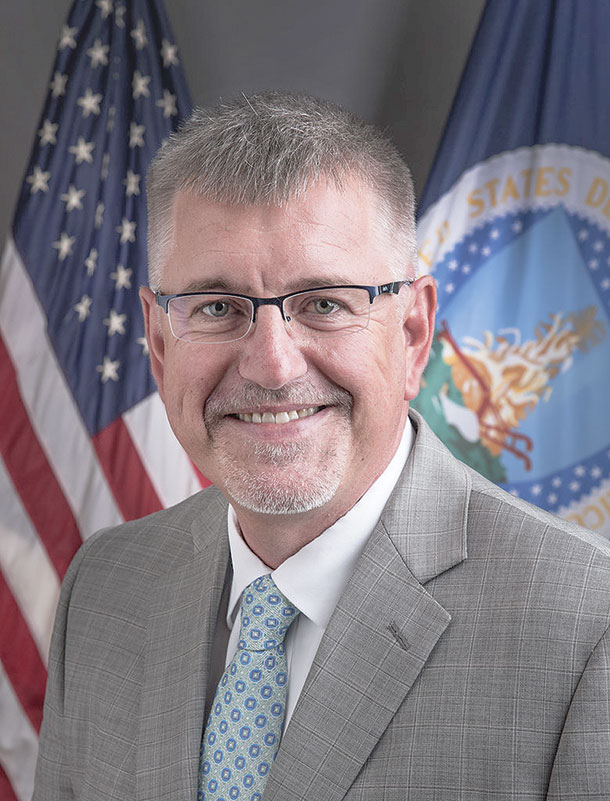Progressive Dairy checked in with FSA Administrator Richard Fordyce to see if there were any changes to the enrollment process or program administration for next year.
 Richard Fordyce
Richard Fordyce
Farm Service Agency Administrator
USDA – Farm Service Agency
Are there any changes to how the enrollment period will be administered?
FORDYCE: We expect the 2021 DMC enrollment to be administered similarly to the 2019 and 2020 enrollments.
During this enrollment period, can producers enroll in DMC through 2023, or is enrollment limited to 2021 participation?
FORDYCE: Only new producers who began commercially marketing milk (started production in the prior 90 days) can lock in coverages until 2023. All other DMC participants will enroll annually, including those dairy operations with lock-in contracts.
If they can enroll for more than one year, are there any adjustments to premiums for producers who enroll through 2023?
FORDYCE: Any new dairy operation (started production in the prior 90 days) enrolling in lock-in coverage will be eligible for the discounted premium rate.
What do producers who enrolled (last year) through 2023 have to do this fall?
FORDYCE: Producers will need to certify to commercially marketing milk, pay the $100 administrative fee and sign the DMC contract. The administrative fee can be waived for eligible limited resource, socially disadvantaged, veteran or beginning farmers.
For any first-time enrollees, what do they need to know and do?
FORDYCE: Those producers will need to establish a production history with FSA and, depending on when they started commercially marketing milk, some production information may be required. In some cases, the milk marketing statements for an applicable time period provide the production history information. However, if a dairy operation has an established production history, enrolling is simply a matter of contacting FSA to complete a DMC contract.
We don’t know about the potential of a second wave of COVID-19. Are there provisions considered to complete any or all paperwork online if FSA offices must continue to restrict face-to-face meetings?
FORDYCE: The DMC enrollment process requires:
- Selection of a coverage level for Tier 1
- Possibly a selection for Tier 2 coverage
- Selection of coverage percentage
FSA county office staff provide support for each of these steps. Through our current operating status, the agency has adopted electronic and online options for producers to be able to complete applications. Please contact your local office when sign-up begins this fall to learn about the best methods to complete the required steps.
Any changes to how the program will be administered in 2021? For example, any changes to how production history is determined?
FORDYCE: There are no changes to the administration of the program for 2021 enrollment.
With COVID-19, school closures or unemployment, we’re hearing about next-generation or other family members coming back to the farm instead of attending school or pursuing other off-farm opportunities, potentially on a permanent basis. Any provisions for dairy operations that may have added a partner or brought a new family member into the operation and expanded?
FORDYCE: Because changes to farm and ranch operations or business structure occur frequently for all FSA program areas, these are a normal farm record maintenance function for FSA county offices and should be easily addressed.
Early 2020 was a difficult time economically. For producers who enrolled in DMC but exited dairying this year, are there any ramifications?
FORDYCE: DMC operations dissolving during 2020 are responsible for the premium cost for the days they were commercially marketing milk.
From a USDA standpoint, are there any learnings you’ve gleaned in the first year of the new DMC? Anything that will carry over into next year and beyond?
FORDYCE: From a risk management perspective, 2020 has been a very volatile year for dairy and commodity markets, making the case for operations to have revenue protection plans in place.
Looking at dairy producer stability, we can’t predict the future and other unforeseen so-called ‘black swan’ events such as COVID-19. However, as we reach a higher threshold of dairy producer participation in government-supported risk management programs, is that preferred to frequent ‘disaster assistance’ programs in terms of both concept and budget?
FORDYCE: Farm bill programs like Dairy Margin Coverage are intended to provide long-term, reliable management assistance and support to America’s farmers and ranchers and our nation’s food supply.
The fact that DMC and recent programs have targeted dairy producers expands FSA’s customer base, which will enable more efficient implementation of future ad hoc programs generated by times of dramatic natural or economic disruptions.
In addition to the steps identified above (direct payments, government purchases), earlier this year there were calls for the reopening of DMC enrollment for 2020. However, Secretary Perdue (and others) expressed opposition to that, noting (paraphrasing) ‘that we had to let insurance work like insurance is supposed to work.’ Now, a month or two later, it seems like ‘insurance’ is working. Any thoughts or comments?
FORDYCE: Long term, risk management through products like DMC will provide stability to the dairy industry just as they have to producers of other agricultural commodities. [The] USDA is committed to working with producers and other providers of risk management tools to improve these tools for the long term. ![]()

-
Dave Natzke
- Editor
- Progressive Dairy
- Email Dave Natzke






